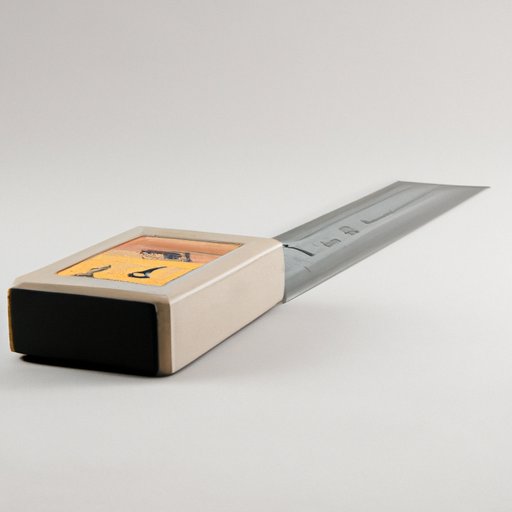Introduction
Whether you are an engineer, scientist, navigator, or an everyday person trying to measure the distance between two points, understanding how to find distance accurately is an essential skill. This article explores the various aspects of finding distance from defining the concept to calculating, measuring, and estimating distance in different scenarios. It is intended for anyone seeking to improve their distance measurement skills.
Understanding Distance
Distance can be defined as the amount of space between two points. It is an important concept used in various fields such as science, engineering, navigation, and more. The units in which distance is measured depend on the purpose of the measurement and the accuracy required. In science, distance can be measured in meters, kilometers, or even light-years, while in navigation, distance is often measured in nautical miles.
Calculating Distance
Calculating distance involves different formulas depending on the number of dimensions involved. In one-dimensional space, distance is simply the difference between two points on a straight line. In two-dimensional space, distance can be calculated using the Pythagorean theorem, while in three-dimensional space, the distance formula can be used. For example, if you have two points on a plane, (x1,y1) and (x2,y2), the distance between them can be found using the formula: sqrt((x2-x1)^2 + (y2-y1)^2).
Real-World Scenarios
Distance measurement plays a crucial role in various real-world scenarios such as construction, land surveying, and sports. Accurate distance measurement in construction and land surveying can determine the stability and safety of structures, while in sports, distance measurement can determine winner and losers in athletic competitions, such as running, jumping, and throwing events.
Measuring Distance
Technology and tools have made distance measurement easier and more accurate. GPS is a widely-used tool for measuring distance in navigation and surveying. Laser distance meters, which use lasers to measure distances, are frequently used in construction and architecture. Similarly, rangefinders can be used to measure distance by emitting laser beams towards the target object and calculating the time taken for the laser to bounce back. However, each tool has limitations that can impact their accuracy, such as environmental interferences that can interrupt the laser beam.
Common Mistakes and Solutions
One of the most common mistakes people make while measuring distance is not taking into account the change in elevation. This can lead to inaccurate measurements. Solutions to avoid such mistakes include using a measuring instrument that takes into account the difference in elevation or reducing errors caused by this factor by measuring the distance along the ground and adding the elevation difference afterward.
Estimating Distance
Sometimes, measuring the exact distance is not possible or required. In such cases, estimating distance can be a practical solution. Estimating distance involves using landmarks, references points, and visual cues, such as the average height or size of known objects in the surrounding area, to get an approximate distance measurement. However, estimating distance should only be done in situations where accuracy is not a primary concern.
Key Takeaways and Conclusion:
Distance measurement is an essential skill with applications in various fields. Whether you need to calculate, measure, or estimate distance, there are tools and techniques available to help you do so accurately. To become a better distance measurer, avoid common mistakes, practice with different tools, and understand the limitations and advantages of each. By doing so, you will improve your skills and increase your accuracy in measuring distance.
